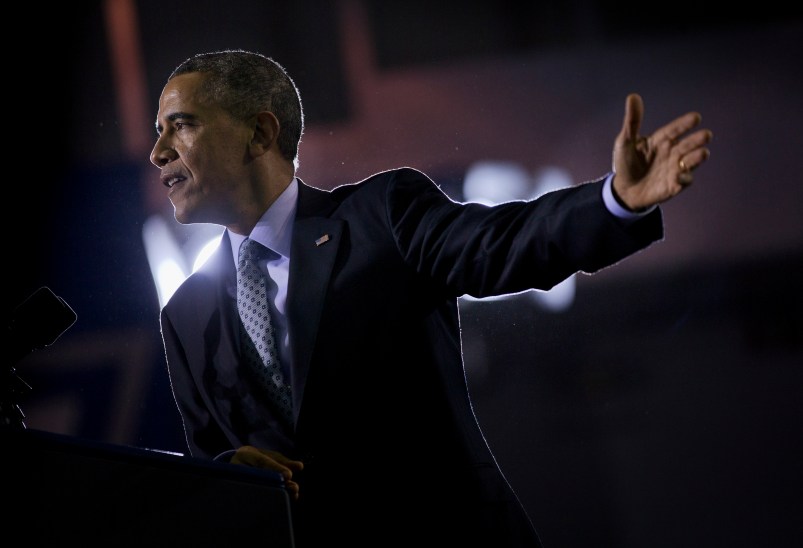In the end, Obamacare is going to be judged by whether it has successfully reduced the number of uninsured Americans. But with a few weeks to go before this year’s deadline to sign up, whether the law has made much progress toward that goal isn’t yet clear — though there are signs that it’s picking up momentum in the private market.
More than four million Americans have enrolled in private coverage under the law, according to the Obama administration, and the law will likely come closer to the Congressional Budget Office’s initial projection of seven million enrollees than most would have thought possible after HealthCare.gov’s disastrous launch.
But how many of those enrollees were uninsured, now newly covered under Obamacare, and how many are simply signing up for new coverage to replace what they already had? A new survey has found that 27 percent of people who signed up for coverage in February were previously uninsured.
On its face, that finding — from McKinsey and Company, a national consulting firm — might sound like bad news for the law and the White House. The broader trend, however, seems to suggest that the uninsured are starting to flock toward the law.
The average percentage of uninsured enrollees had been 11 percent from October to January, according to the firm, so 27 percent is a significant jump. That makes sense, health policy experts say. People who already had coverage likely didn’t wait to sign up; they’re used to being insured and they wouldn’t want their coverage to lapse.
But for uninsured people, being insured isn’t the status quo, so they might take more time to enroll. Their deadline is March 31.
“There’s every reason to believe that early enrollment skewed towards the already insured and that the uninsured will sign up later,” Larry Levitt, vice president at the Kaiser Family Foundation, a non-partisan organization, told TPM. “People who were insured and had their old non-compliant policies cancelled were no doubt first in line in the new marketplaces, along with some people with pre-existing conditions who were locked out of the market before.”
Another finding from the survey also suggests there could be a March surge in uninsured people enrolling in coverage: 65 percent of respondents who said they hadn’t enrolled yet but planned to before March 31 were uninsured.
“The uninsured, particularly those who are young and healthy, are more likely to enroll as the final deadline approaches this month,” Levitt said.
McKinsey and Company surveyed 2,096 people who would eligible to buy insurance on HealthCare.gov and its state counterparts, both previously insured and uninsured.
The survey doesn’t account for Medicaid enrollees, which could also significantly cut into the uninsured rate. According to Kaiser, 31 percent of uninsured Americans have an income below 138 percent of the federal poverty level — the threshold for expanded Medicaid under the law in states that chose to participate. The Obama administration has said that nearly nine million people have enrolled in Medicaid since Obamacare launched in October, though that number includes both new sign-ups and renewals. An independent analysis estimated that between 1.1 million and 1.8 million new enrollees could be attributed to the law through January.
There is also some mixed signals outside of the McKinsey survey, though it is likely the most comprehensive attempt to gauge Obamacare’s direct impact on the uninsured. The administration is not tracking the statistics for those signing up through HealthCare.gov.
The White House has touted Gallup poll results that have found a drop in the percentage of uninsured Americans since Jan. 1, when Obamacare coverage first took effect. According to the Washington Post, New York’s Obamacare marketplace — the only one to ask enrollees if they were previously insured — reported that 70 percent of those who signed up were uninsured before the law.
Enrollment was always expected to be an incremental process. After the U.S. Supreme Court made the law’s Medicaid expansion optional, CBO estimated the number of uninsured Americans would fall by 14 million in 2014. It’s still not clear if the law will hit that mark, with Medicaid and private coverage combined, this year. But CBO also projected that the drop would double over the next few years, to 28 million fewer uninsured people in 2017.
It’s that long view, experts say, that will ultimately determine the law’s success.
“Ultimately, the uninsured will have to enroll for the program to be a success,” Levitt said. “But, that was never expected to happen all at once. Many of the uninsured are very low-income and have a lot going on their lives, so it’ll take time to reach them.”






